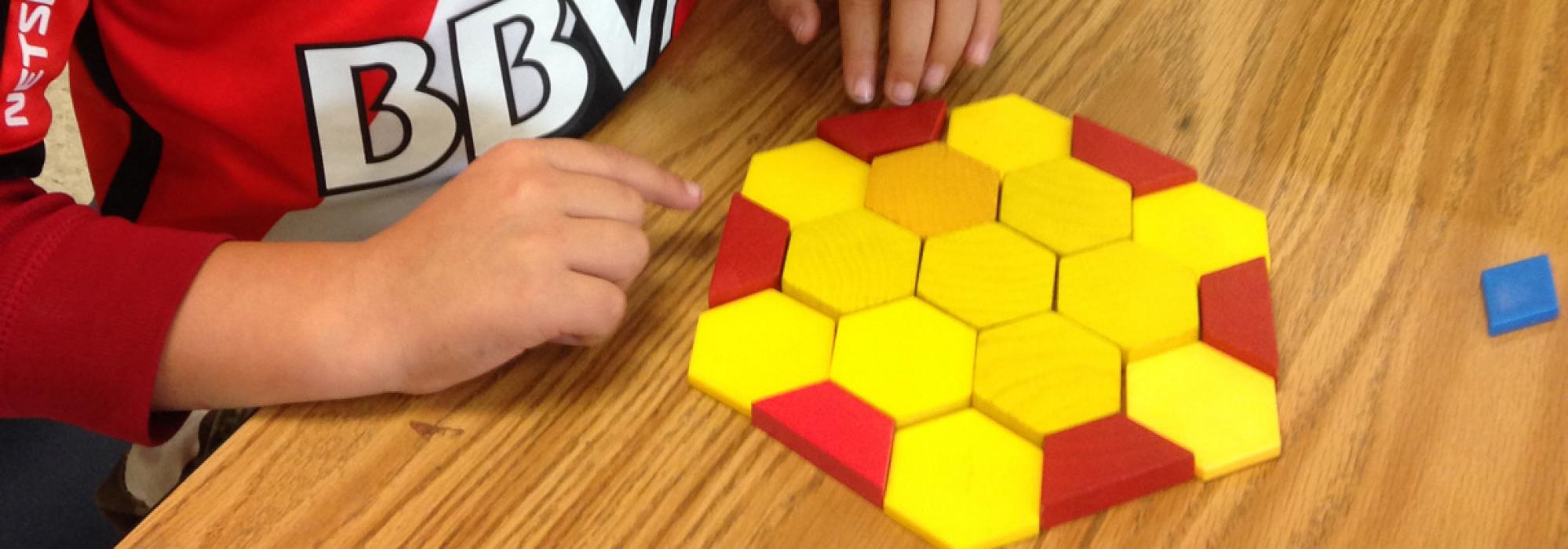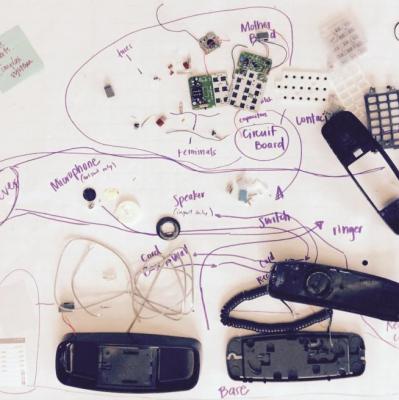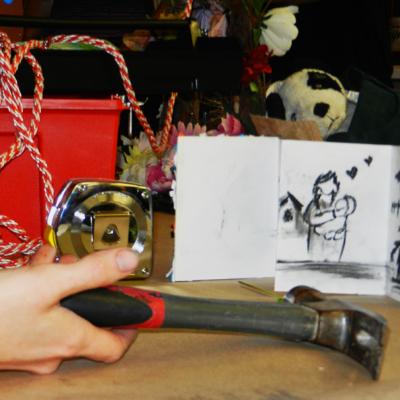
Setting the Stage: Creating a Maker-Centered Learning Environment through Narration
Students in AbDLC member Tatum Omari’s Class at Cragmont Elementary School in Berkeley, CA use narration and patterned blocks to tell the story of their ideas about complex systems.
“What do I want to see more of in my classroom?” Lately, this is a question that has become the cornerstone of my teaching. It helps me to frame and express my hopes and expectations in increasingly direct and supportive ways.
As an educator of young children, looking closely at your expectations is, in my opinion, one of the most incredible means of self-reflection a teacher can engage in. It can also be immensely helpful in terms of refining your ability to communicate those hopes and expectations to your students.
So what do you think? What do you want to see more of in your classroom? Are you hoping that more students will conquer the task of getting from the rug to the line for recess quietly? Would you like to see some deeper discussions about the characters in stories when students turn and talk during Readers Workshop?
Once you’ve taken a moment to brainstorm ideas about what you want to see more of in your classroom, it’s time to consider a second question: how do you let everyone know? The first step is to observe. You know what you want to see more of… can you see anyone doing it already? This, my friend, is your golden opportunity to discover the power and magic of narration
The use of narration in the classroom is deeply tied to Project Zero’s Making Learning Visible initiative, where documentation is used to tell the stories of student work. I first discovered the power of narration when it transformed my classroom management. What narration can really help to do, is tell the story of our everyday lives, thinking processes, and how we move through and operate in our classrooms.
It also made the hopes that I had, when we set up thinking routines in the classroom, explicit by highlighting positive examples. During a See, Think, Wonder thinking routine, it was easy to highlight a student who was observing things like colors, shapes, textures, size, and positions, instead of offering thoughts or insights which don’t come until later. It gave recognition to a child who was providing a great model and an explicit example of what I wanted to a child that was still practicing. The possibilities for the use of narration in the classroom are endless, however, and extend far beyond classroom management concerns.
Again… The question of the day is “What do I want to see more of in my classroom?” In this case, with regards to creating a maker-centered environment, it’s creativity and innovative thinking that I’m after.
At a recent workshop given by Agency by Design researcher Edward Clapp, at the Creativity in Learning, Today and Tomorrow symposium, we examined the question “What are the conditions under which creativity thrives?” For me, it’s about finding that one moment, the moment of thinking that represents a small spark, that you can hose down with hair spray to light everyone else’s thinking on fire. It’s about finding the inspiration and giving the source the recognition that could ignite a lifetime of belief in their own abilities. It’s about always seeing possibilities and using inspiration points as catalysts. This has become my most important work as a teacher.
Now, I have a recent hairspray moment to share. The last Teaching for Understanding unit we explored in my classroom was based on systems. My students examined different systems in the world and how they are organized, how they work, and what they do. One day a student of mine, Valentino, was working on organizing patterned blocks into a system. Upon visiting his table I asked him to explain his system to me. He had many hexagons that had been arranged into a circular formation and were flanked by red trapezoids. As Valentino began to tell the story of his idea, my eyes widened really fast. He explained, “The hexagons are the ocean and the trapezoids are an alarm system. When the water gets too high and hits the trapezoids, the alarm goes off.”
Freeze Frame! He was using his imagination to prototype an idea through patterned blocks—and he was using narration to tell the story of his idea. Here was my opportunity! Time for some hairspray!
“Hey everyone, look at what Valentino has done!” I exclaimed. “He is using his imagination to pretend that the trapezoid patterned blocks are an alarm and the hexagon patterned blocks are the ocean. Isn’t that amazing? What a great way to use patterned blocks to explain an idea you have about something else! I love the way he used his imagination and the materials he had available to explain his idea so clearly.”
Now wait… get ready for it. Operation start a wildfire…. Success! Five minutes later, patterned blocks were being used by my students to represent every system you could imagine under the Sun! One child had patterned blocks that represented an idea for a system of waterslides, and another had patterned blocks that represented a game of soccer between himself and his friends. That’s right… hairspray at the right moment can spread a spark of creative thinking like wildfire!
So… are you ready now? It’s time to get out your hairspray and start looking for sparks.
*****
Tatum Omari is a kindergarten teacher at Cragmont Elementary School in Berkeley, CA and a member of the Agency by Design Learning Community. Her approach to project-based learning comes from her experience with Project Zero’s Teaching for Understanding Framework and her participation in the Alameda County Office of Education’s Arts Integrated Learning Specialist Program. Her involvement in the Agency by Design research initiative has rekindled her love of making that was sparked early on for her as the child of a general contractor and avid DIY adult role model of awesomeness.






